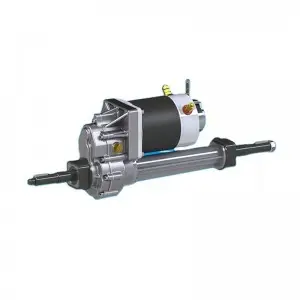The transaxle is an important part of a vehicle’s drivetrain, responsible for transmitting power from the engine to the wheels. Knowing the date your transaxle was manufactured is important for maintenance and repairs. In this article, we’ll explore the importance of a transaxle and provide a comprehensive guide on how to find the manufacturing date of your transaxle.
A transaxle combines transmission, differential and axle components in an integrated unit. It is common on front-wheel drive and some rear-wheel drive vehicles. The transaxle plays a vital role in ensuring that the engine’s power is efficiently transferred to the wheels, allowing the vehicle to move forward or backward.
Knowing the date your transaxle was manufactured is crucial for a number of reasons. First, it helps identify the specific model and version of the transaxle, which is critical when sourcing replacement parts or performing maintenance. Additionally, knowing the manufacturing date provides insight into the transaxle’s potential life and wear, allowing for proactive maintenance and repairs.
To find the manufacturing date of your transaxle, follow these steps:
Check the Vehicle Identification Number (VIN): The VIN is a unique code assigned to each vehicle and contains valuable information, including the date of manufacture. The VIN can usually be found on the driver’s side dashboard, driver’s door jamb, or official vehicle documents such as registration or insurance documents. Once you find the VIN, use an online VIN decoder or ask the vehicle manufacturer to interpret the date of manufacture.
Inspect the transaxle housing: In some cases, the transaxle manufacturing date may be stamped or engraved on the transaxle housing. This information is usually on a metal plate or casting and may require cleaning or removal of debris to be visible. See your vehicle’s service manual or contact the manufacturer for specific instructions on finding the manufacturing date on the transaxle housing.
Contact the Manufacturer: If the manufacturing date cannot be easily obtained via the VIN or transaxle housing, then contacting the vehicle manufacturer or transaxle supplier is a reliable option. Provide them with the VIN and any other relevant vehicle details to request the date of manufacture of the transaxle. Manufacturers usually keep detailed records of production dates and can provide accurate information upon request.
Once you have the manufacturing date of the transaxle, it is important to record this information for future reference. Recording the build date and any maintenance or repair activities can help establish a comprehensive maintenance history of the vehicle.
In addition to finding the build date, it’s important to understand the importance of this information. The manufacturing date can provide insight into potential wear and tear on the transaxle, as well as any specific manufacturing or design features that may be relevant for maintenance and repair. For example, there may be known issues or recalls with production runs of certain transaxles, and knowing the manufacturing date can help determine whether the transaxle is among those affected.
Additionally, knowing the date of manufacture can help in sourcing the correct replacement parts for the transaxle. Manufacturers often make incremental changes or improvements to transaxle designs over time, and knowing the date of manufacture ensures that replacement parts are compatible with the specific version of the transaxle in the vehicle.
Regular transaxle maintenance is essential to ensure its longevity and optimal performance. This includes checking and changing the transmission fluid, inspecting axle seals and bearings, and addressing any unusual noises or vibrations that may indicate a potential problem with the transaxle.
In summary, the transaxle is an important part of the vehicle’s transmission system, and knowing the date of manufacture of the transaxle is critical for maintenance and repair. By following the outlined steps to find the manufacturing date and recognizing its importance, vehicle owners can proactively maintain their transaxles and ensure the continued reliability of their vehicles. When performing maintenance or repairs on the transaxle, remember to consult your vehicle’s service manual and seek professional help.
Post time: Mar-25-2024


